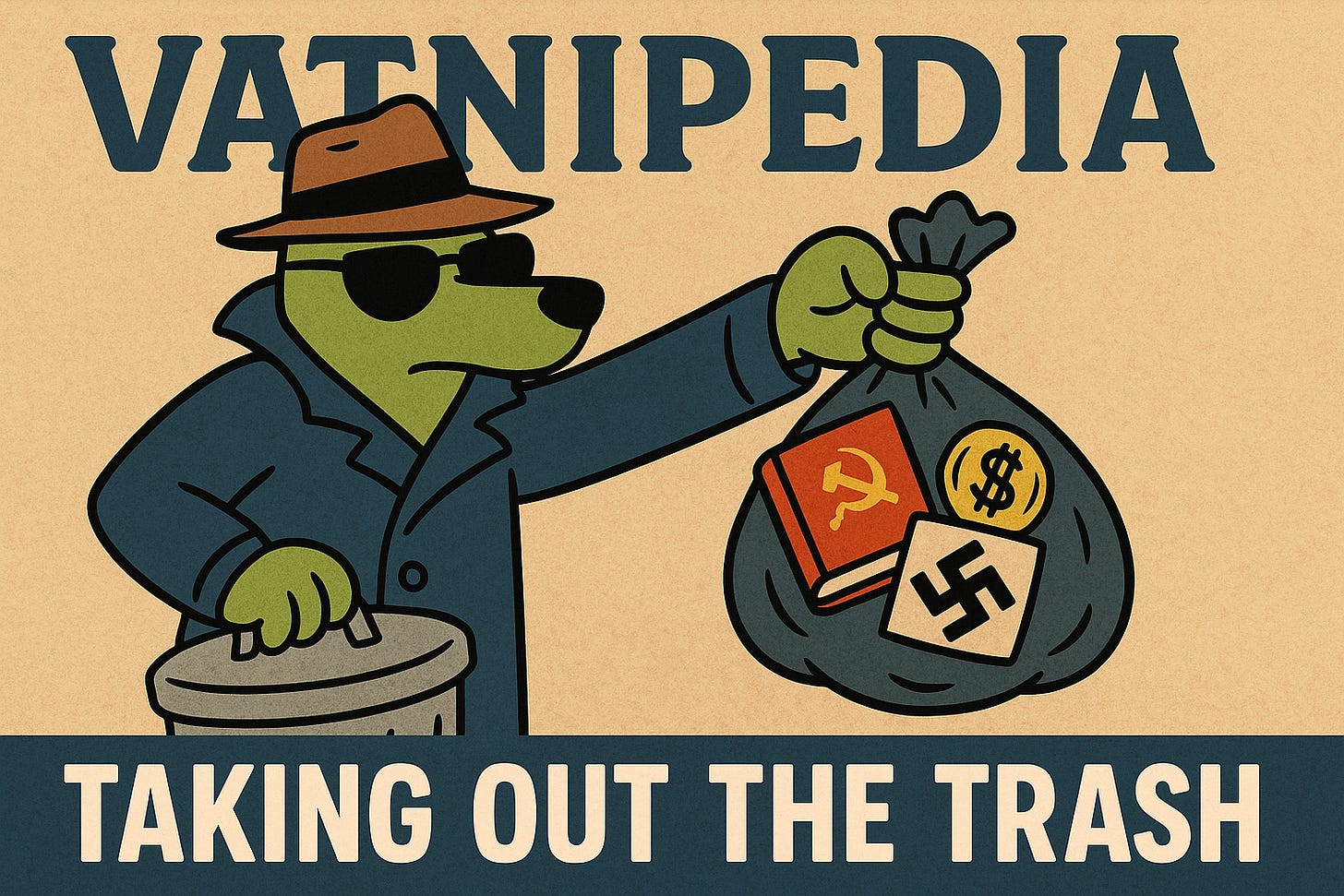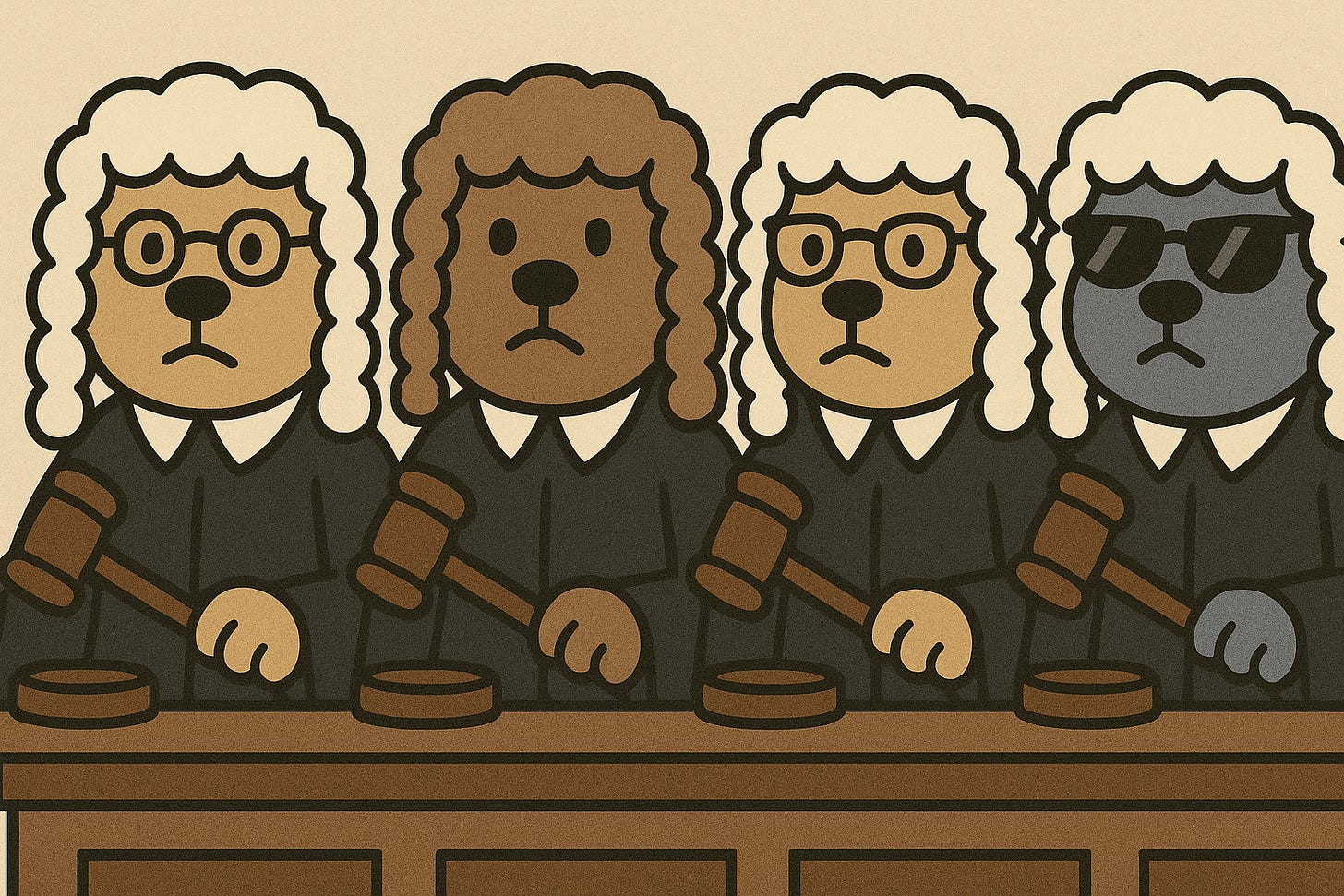Vatnipedia: Taking Out The Trash
Proof Against Erasure: How Vatnipedia Will Lock Down Evidence of War Crimes
In an age where war crimes are live-streamed—only to be denied, deleted, or distorted hours later—the need for permanent, tamper-proof evidence systems has never been more urgent.
Vatnipedia, a collaborative intelligence project tracking disinformation and geopolitical influence, is building a layered trust framework to defend truth. And part of that defence means locking down the evidence of atrocities before they disappear.
Here’s how we intend to do it.
🧩 Step 1: Collecting and Classifying Evidence
Whether it’s satellite imagery, Telegram leaks, or battlefield footage, raw data flows into Vatnipedia’s graph network (built on Neo4j). Each artifact is:
Tagged by source
Linked to relevant events, actors, and narratives
Versioned and annotated by users, investigators or partnered OSINT groups
This preserves context, not just content.
🧱 Step 2: Creating a Cryptographic Fingerprint
We don’t store raw videos on the blockchain. That would be wasteful and expensive.
Instead, Vatnipedia generates a SHA-256 hash of each file or record:
This hash is a unique digital fingerprint.
Even a one-pixel change in the source file produces a different hash.
It proves the evidence hasn’t been modified—ever.
Think of it like sealing the evidence in a glass box, with a digital signature burned into the lock.
🔗 Step 3: Anchoring to the Blockchain
That hash—along with metadata like:
Time of upload
Source verification (e.g. Bellingcat, Syrian Archive)
Analyst who submitted or verified it
...is written to a public blockchain. This becomes a permanent anchor in a tamper-resistant ledger.
We use lightweight, low-cost blockchains (e.g. Filecoin, Polygon, Arweave) for:
Anchoring trust events
Time-stamping evidence
Recording analyst attestations
No one—not a regime, not a judge, not even Vatnipedia itself—can edit or delete this chain.
🧠 Step 4: Federated Trust and Dispute Resolution
Disputes about evidence or source authenticity don’t happen in a vacuum.
Vatnipedia’s Public Trust Layer records:
Analyst reputations
Community votes of confidence
Withdrawal of trust (e.g. if an uploader is later found to be manipulating data)
These trust events are also periodically anchored to blockchain, preserving a record of who trusted whom, when, and why.
This builds a chain of accountability, not just data.
💡 Why It Matters
When governments erase videos or platforms auto-delete posts, Vatnipedia keeps a fingerprint on-chain.
When propagandists say “that never happened”, the blockchain says otherwise.
When war criminals are brought to trial, the evidence trail includes cryptographic proof, not hearsay.
This isn’t just a nerdy NAFO obsession with decentralisation. It’s a strategy to preserve truth under fire.
🛡️ Bottom Line
In the fog of war—and the blizzard of disinformation—truth is fragile.
By anchoring evidence cryptographically, Vatnipedia offers a resilient system that makes denial futile, revisionism detectable, and justice just a little more possible.
Because if we can’t lock down the truth, someone will always try to erase it.





A most noble use of data notarization. There's a lot of work already done in this area, don't reinvent the wheel. Been years since I've touched it but I do recall writing about it for Forbes back in the day.